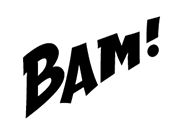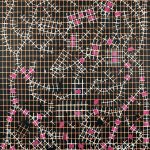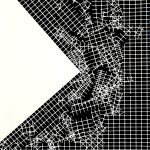Parking Space: Exploring Collapse, Connection, and the Ubiquity of the Everyday by Joshua Nickerson
“Parking Space” is an exhibition that highlights the pervasive anxieties of a society confronting the gradual collapse of its infrastructures by Joshua Nickerson. The work addresses issues visible in cities like Buffalo and throughout the rust belt, where a housing crisis is marked by a scarcity of livable units, while abandoned buildings continue to deteriorate.
The exhibition links extractive economic systems to notions of waste, use value, and decay. Infrastructural systems, while purportedly designed to impose order, are often only maintained so long as they serve to reap economic benefit for a select few. This profit-driven model places minimal value on maintenance and care, resulting in an inherent tendency toward collapse and instability over time.
A narrative of extraction and abandonment is inscribed in the architectural record of post-industrial cities. As disused factories accumulate, the houses that once sheltered the labor force—those who powered entire industries—are typically the first to fall into neglect. The unchecked entropy continues until even the grand but obsolete mansions of former mill owners succumb to decay.
This process of decline extends beyond structures. As the built environment is slowly reclaimed by nature, the collapse of the systems that once supported human life manifests in shortages of basic necessities such as shelter and food. Eventually, this collapse permeates the invisible yet crucial social and political systems that shape collective reality. The exhibition invites viewers to reflect on systemic collapse as well as the nature of human connections and the possibilities for different forms of building and being.
Within this exhibition, the “Parking Space” series stands as both a literal and metaphorical focal point. While ostensibly representational, these works employ compositional principles akin to abstraction, interrogating the construction and interpretation of reality. The series examines the visual and ideological implications of the parking space—an element at once mundane and unexpectedly dynamic, necessary yet problematic, omnipresent yet often scarce.
A parking space is typically regarded as a mere placeholder, stripped of deeper meaning, yet it is curiously charged in the cultural imagination with ideas of waste, excess, and emotional complexity. For so simple a visual structure, the parking space attracts a range of projected emotions and interpretations: pitiful, empty, hostile, comical. At its core, it is coveted real estate and simultaneously a symbol of the destructive impact of personal vehicle dependence—a destroyer of nature and history as well as the very embodiment of the mundane.
The parking space exists as both a void created for vehicles and a metaphorical vehicle for expressing cultural critique and emotional response. By situating this humble and ubiquitous element within the art gallery, the exhibition encourages viewers to reconsider its significance, engaging with it intentionally and attentively—far beyond its usual context.
“Parking Space” is not only a study of physical places but also an invitation to reflect on the broader intersections of collapse, connection, and the everyday. The work compels viewers to confront the anxieties embedded in the built environment, to recognize the marks left by histories of extraction and neglect, and to imagine alternative ways of inhabiting and interpreting space.









